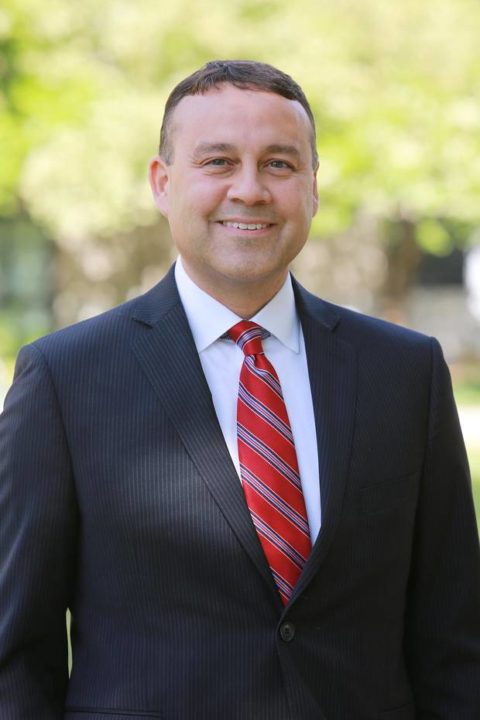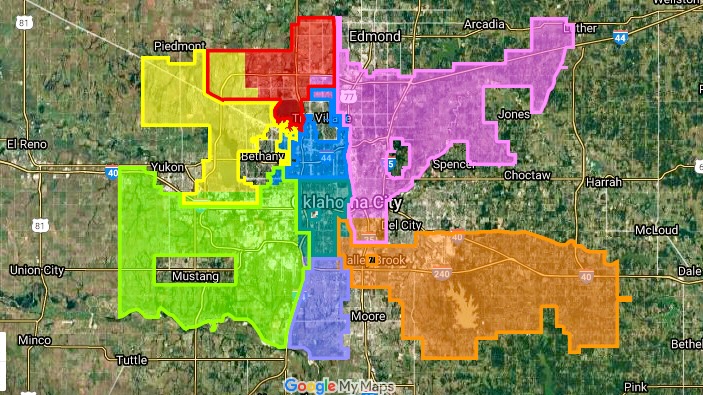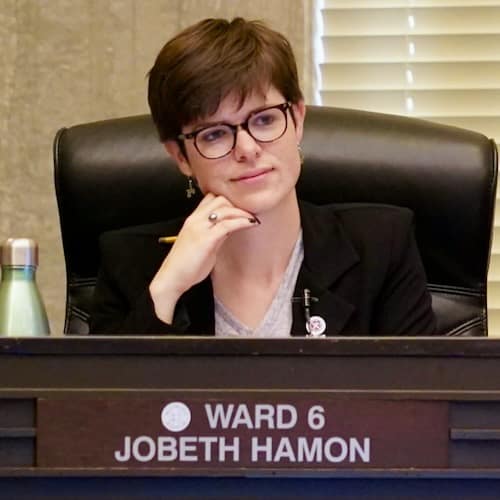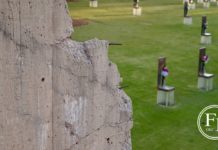Last Updated on January 23, 2022, 11:42 PM | Published: January 22, 2022
OKLAHOMA CITY (Free Press) — The City Council of the City of Oklahoma City is currently overseeing the process of redrawing the official boundaries between the City’s eight wards, each represented by a single councilperson. A ward represents a geographic segment of Oklahoma City that spans 600+ square miles.
This “redistricting” process is a necessary and required action, as 2020 census data shows that OKC’s booming population over the past decade has disproportionately settled in northern and western parts of the city. This means that certain wards currently have far higher populations than others.
When this happens, the official charter of Oklahoma City says that the wards must be balanced by redrawing the boundaries to roughly even out the population numbers within each ward.
Exactly how that process is handled, however, is a matter for debate, and though there have already been a number of City Council meetings on the topic, and though a proposed map of newly balanced districts has already been submitted, the City Council will be hearing public comments and opinions on the matter in a
- Virtual town hall, Monday, January 24th, (Zoom link) at 5:30 p.m.
- And an in-person, one-on-one meet-up with City staff on Thursday, January 27th between 3:30 and 6:30 p.m. at the Bennett Events Center, the Oklahoma City Fairgrounds, 3101 Gordon Cooper Blvd.
JoBeth Hamon, Councilwoman for OKC’s Ward 6, is especially hoping that city residents will show up next week to make their voices and comments heard on the issue.
“I want to really encourage people to engage in the process,” she said. “Even just those little comments that citizens make, even if they don’t change how the map is drawn, they do trickle up.”
Charter Rules
Assistant City Manager Kenton Tsoodle is the person responsible for assembling and coordinating the team of City Council staffers that has been largely responsible for the redistricting effort, and he’s quick to point out how much wiggle room the city has to work with while still adhering to charter rules for ward sizes.

“Really the only few requirements in the charter are that we shall balance the wards as nearly as practicable,” he explained.
In this case, the council took that open-ended requirement of “as nearly as practicable” and implemented some clearer, stricter guidelines. Most important among them was setting a limit on the variance between ward populations of 2%, meaning that no ward could have a population more than 2% greater or fewer than the others.
“They also added the requirement that we keep an incumbent in their ward,” Tsoodle said, referring to the legal requirement that a councilperson must live within the ward they represent, and the possibility of drawing a sitting councilperson’s home outside the new boundaries for their district. “Technically, our charter does not have that, you know. Technically, you could draw somebody out of their ward, so that was something that the resolution required.”
That rule did cause some extra complication in moving and setting the new boundaries.
“There’s two wards where the incumbents don’t live that far away from each other, right by the border of the wards,” Tsoodle said. “That means we couldn’t go very far north on this one or very far south on that one because the incumbents live there.”
Compact and Contiguous
Aside from those rules and guidelines, the main requirements of the redrawing effort have been “compactness and contiguity.”
“In other words,” Tsoodle explained, “a ward can’t have an island off in another part of the city.”
While that may seem like an obvious rule, it is exactly that kind of creative, complex, and non-contiguous district design that has led to accusations nationwide of rampant partisan gerrymandering, the process of intentionally drawing district maps to favor one party by willfully including or excluding certain areas and neighborhoods.
To combat this, numerous cities and states across America have begun appointing independent redistricting commissions made up of non-governmental members from a broad spectrum of political allegiances.
Another way to do it in OKC would have been to increase the number of wards (and by extension, the number of city councilors) in order to better serve all the neighborhoods in the City. In that scenario, each councilor would be representing fewer residents and a smaller portion of the City and, at least in theory, would be able to understand the needs of their residents better.
Both of these policies were pushed strongly by Councilwoman Hamon, and both were voted down by the council.
“I think what we have right now is an outsized representation of what the City really is,” Hamon said. “These wards are very large, and they include a lot of diverse communities with diverse needs that 2 or 3 people just can’t effectively represent.”
Efforts for contiguous wards
However, an effort to make the wards more compact and contiguous, especially in the urban parts of the City, are being attempted in some small ways with the proposed map.
For example, on the proposed map, the more central and urban Mayridge, Airline, and Treadwell Hills neighborhoods just north of Oklahoma City Community College would be shifted from Ward 3 into Hamon’s Ward 6 that covers most of the central, older south side. Those neighborhoods have far more in common with the urban south side than they do with Ward 3 farms and rural acreages halfway between Mustang and Union City.
In addition, Ward 6 will also gain the historic Capitol Hill area, again contiguous with that ward after spending years as a panhandle of the expansive exurban Ward 4 that touches the Moore and Norman City limits on its south edge and comes to within ten miles of McCloud on the east.

However, when asked if any consideration had been given to consistency of lifestyle or culture within the wards on the proposed new map, Tsoodle said those concerns were at least somewhat ignored in favor of compactness.
“I would say, technically, there’s not consideration given to that directly, because that was not a criteria that the Council adopted in their guiding resolution,” he said. “However, I think keeping neighborhoods together using major landmarks, major streets, things like that, for the most part, I think that’s the way that probably gets handled. But there are some areas in the city where different lifestyles maybe kind of butted up against each other.”
It’s time for Public Comment
Throughout this process, citizens have been able to voice their thoughts and concerns by email, phone, and in person at City Council meetings, but next week there will be two opportunities to engage directly with counselors about redistricting and the proposed new ward map for OKC. Monday will see a virtual town hall, and Thursday there will be an in-person meeting period at the Bennett Events Center at the Fairgrounds.
Hamon is hopeful that citizens will come out to voice their opinions, especially as she claims the process hasn’t been as transparent as she’d like thus far.
“It’s admittedly an ethically gray area,” Hamon told me, “but I know that some council members have had private meetings about redistricting when this should really always be public.”
In her opinion, hearing from the residents of the wards directly can be much more beneficial than leaving the process up to staffers.
“It really helps to educate council members to hear from people that actually live and work in these neighborhoods,” she said.
And Tsoodle wants to reassure the public that, although the meetings have been had and the new map has been drawn and proposed, it’s not impossible for the council to rethink and reopen the process and consider different methods.
“If we get a lot of resident comments, and it becomes something that the council feels rises to that level, and it’s important,” he explained, “there’s nothing that legally would preclude us from that.”
To view the proposed map and see more information, including a video explainer from Kenton Tsoodle himself, and for links and schedules for the virtual town hall and the in-person meeting at Bennett Events Center, visit okc.gov/redistricting.
Brett Fieldcamp has been covering arts, entertainment, news, housing, and culture in Oklahoma for nearly 15 years, writing for several local and state publications. He’s also a musician and songwriter and holds a certification as Specialist of Spirits from The Society of Wine Educators.












